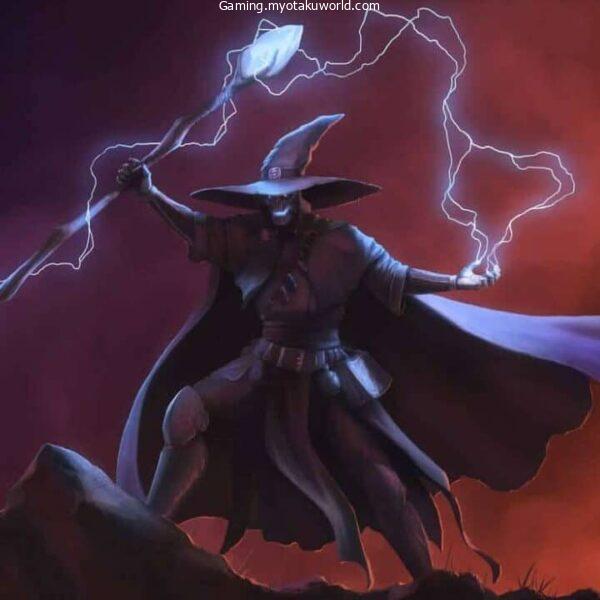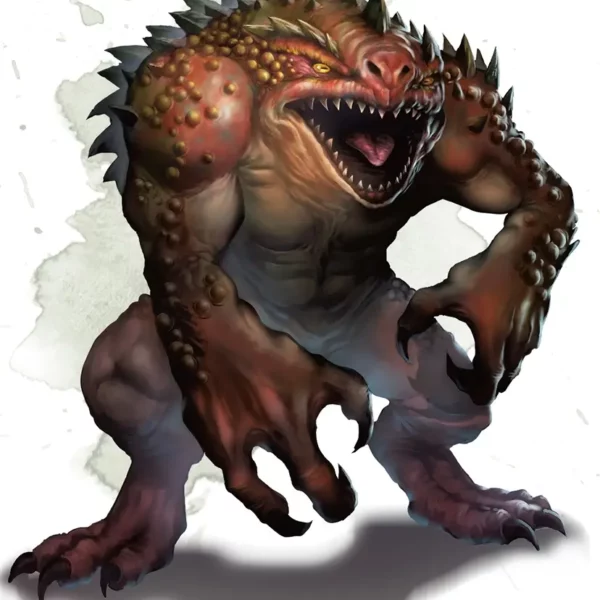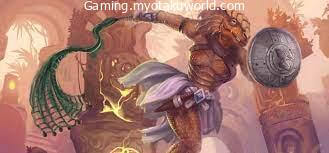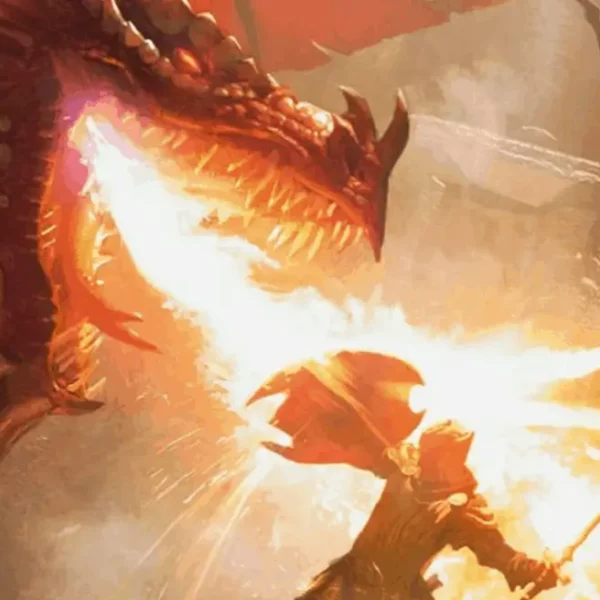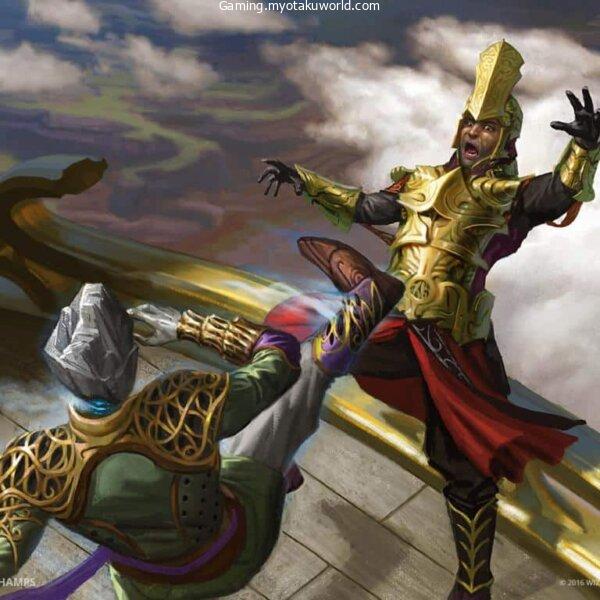A spellcasting focus is an object or symbol that a spellcaster employs in Dungeons & Dragons 5e to cast specific sorts of spells.
A spellcaster has three options when it comes to casting a spell with a material (M) component.
It is possible to employ the spell components stated in the spell, a component bag, or a concentration to cast a spell.
As a general rule, it’s recommended to utilize either the bag or the focus in order to make spellcasting as simple as possible.
In order to simplify the game, a spellcasting focus or component bag eliminates the need for all spell components save those with a set cost (usually in gold or silver pieces).
Depending on the class of the caster, a focus might come in a variety of ways.
How Do Spellcasting Focuses Work in 5e?
Most magic in Dungeons & Dragons require a physical item, like a handful of bark, a small bell, or something similar. Some classes can use a spellcasting focus instead of these items, which don’t cost much.
These spellcasters send their magical energy through these focuses to actually “focus” their magic through the object.
This object must be held in a free hand in order to be used, but that hand can also be used for the somatic component, which are the hand movements used to cast spells.
If the material component costs money, like the 100gp pearl needed for the identify spell, the spellcaster must still have the component in their hand before they can use the spell.
There are also times when the spell uses up the expensive part (like the 300 gp diamond in the revivify spell), which doesn’t change because of the spellcasting focus.
Classes & Focus Rules
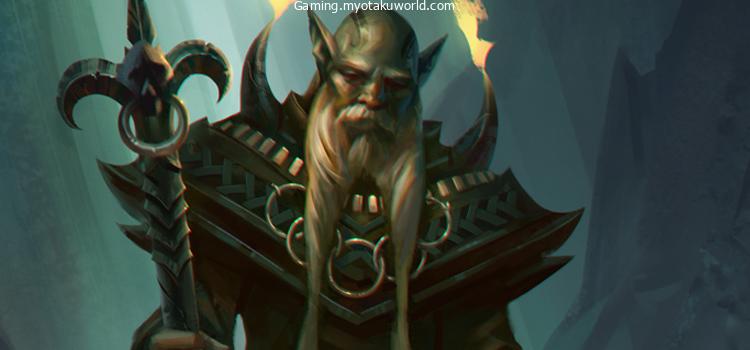
An arcane focus might be anything like a crystal, orb, rod, staff, or wand for arcane casters (wizards, sorcerers, and warlocks).
These characters perform arcane spells. A focus can take the form of a sprig of mistletoe, a totem, a staff, or even a yew wand.
Amulets, reliquaries, and emblems are all examples of holy symbols that may be used as a spellcasting focus by clerics and paladins.
The prices for these focuses may be found in Chapter 5 of the Player’s Handbook in the part of the book titled “Equipment.”
When it comes to employing a spellcasting focus, certain classes and subclasses are subject to their own unique set of guidelines.
Bards, for instance, are able to utilize a piece of musical equipment as a focus, but College of Swords bards are able to utilize their sword as a focus. A tool set can serve as a focal point for an Artificer.
You need to keep in mind that in order to utilize a spellcasting focus or component bag, you will need at least one free hand.
This is the most crucial item to keep in mind. You may, however, wield a two-handed weapon, and if you need to retrieve your component bag or concentrate, you may do so by removing one of your hands from the weapon.
It is not necessary for clerics and paladins to have a free hand in order to cast spells that need a material component because they can either wear their holy sign on their body or have it on their shield. This is the case unless the material component has an associated cost.
Keep in mind that in order to cast spells with somatic components (S), you must also have one hand free.
On the other hand, this can be the same hand that is used to access the component bag or the spellcasting concentrate while casting a spell.
It is possible for characters that use their weapon or shield as their focus, such as clerics or paladins, to cast spells that have both (M) and (S) components with the hand that is holding their shield.
However, in order to cast a spell that only has (S) components, such as cure wounds, you will need an additional hand.
If you find this rule to be puzzling or irritating, know that I share your sentiments.
If you would like, you can discuss simplifying the rules governing casting and free hands with your game master (DM).
Alternately, the War Caster feat is well-liked by a number of players since it enables players to execute somatic components even while holding a shield or weapons in both hands.
This makes the War Caster feat appealing to a number of players.
The vast majority of DMs do not wish to keep track of the spellcasting focus of characters, and as a result, they are often quite flexible and let players keep track of their own spellcasting.
They will also frequently let objects that are not included in the PHB equipment list function as a focus in the game.
If you are playing with a DM who is extremely particular or difficult regarding the rules of spell components, you can direct them to the Player’s Handbook Chapter 10 for rules on spell components and to Chapter 5 for information on the various types of focuses.
If you are playing with a DM who is extremely particular or difficult regarding the rules of spell components, you can direct them to the PHB Chapter 10.
There are also magic items that have the potential to serve as a spellcasting focus, such as the Ruby of the War Mage, which is a common magic item and grants any character the ability to use a weapon as a spellcasting focus at the expense of one of their attunement slots.
Other magic items also have this potential.
How Does Each Class Utilize its Focus?
Each class that can use a spellcasting focus has its own special things that can be used with it.
- Bard magic can be cast with any musical instrument.
- As a focus, a cleric or paladin can use a holy symbol that reflects their god or their goal. Other classes have to hold their focus in their hands, but this one can also be worn or put on top of a shield.
- Druids use something called a “druidic focus.” This is usually a piece of wood or a live thing. So, if you use Tasha’s Cauldron of Everything rules, Rangers can also use a druidic focus.
- Wizards, Warlocks, and Sorcerers use a magical focus, which is a special tool like a rod, wand, or staff made only for directing magic.
Artificers use a spellcasting focus in a very different way than other classes. They are the only class that can use a tool as a spellcasting target.
They can use either a thief’s tool or an artisan’s tool. Once they learn “Infuse Items” at 2nd level, Artificers can also use an infused item as their focus. Artificers are also the only class that can’t use a component pouch for spells that need a material component.
Instead, they must use a spellcasting focus. Artificers have to have their focus in their hands, and the focus doesn’t replace the need for expensive materials, so they need two hands to cast spells that use expensive materials.


